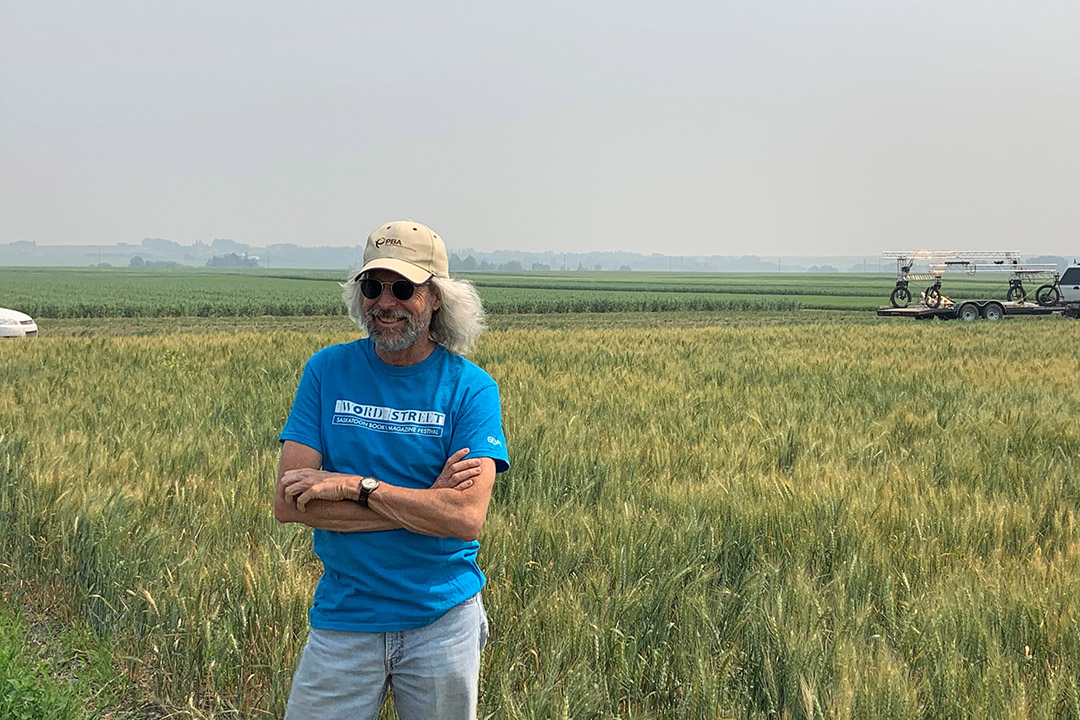Saskataoon, Saskatchewan, Canada
March 18, 2022
 Dr. Randy Kutcher (PhD), professor in the College of Agriculture and Bioresources and a plant pathologist at USask’s Crop Development Centre. (Photo: Submitted)
Dr. Randy Kutcher (PhD), professor in the College of Agriculture and Bioresources and a plant pathologist at USask’s Crop Development Centre. (Photo: Submitted)
A large multidisciplinary team led by Dr. Randy Kutcher (PhD), professor in the College of Agriculture and Bioresources and a plant pathologist at USask’s Crop Development Centre (CDC), and Dr. Lipu Wang PhD), research officer at CDC, was awarded $825,000 over three years to develop wheat plants with stronger genetic resistance to Fusarium head blight (FHB).

Dr. Lipu Wang PhD), research officer at USask’s Crop Development Centre. (Photo: Submitted)
Industry partners Western Grains Research Foundation (WGRF), and the Saskatchewan Wheat Development Commission (SWDC) are providing total cash and in-kind contributions of $412,500, bringing the total project value to $1.24 million.
A fungal disease, FHB shrivels kernels in the grain, causing severe losses in yield and quality.
“Cultivating resistant wheat varieties is an efficient, eco-friendly and often most economical way to control FHB when it’s part of an integrated pest management program that includes crop rotation, appropriate seeding rates, and use of fungicides when the situation warrants,” said Kutcher.
He said the project will provide a “selection of tools” to achieve several objectives and can accelerate plant breeding cycles and benefit the wheat industry.
- The current problem with FHB is linked to growers’ preference for short plants—they want less plant and more seed. Yet researchers have found that the genes for short plants are also associated closely with genes for susceptibility to Fusarium.
“So, one part of the project is to try to find new dwarfing genes, or somehow figure out how to break that linkage and separate the genes,” said Kutcher.
- The second objective is to see what’s actually happening inside the plants, so when plants become infected, researchers can understand changes in the plant metabolism. Researchers want to learn if FHB-resistant plants produce different compounds than susceptible plants.
- To select plants that are less prone to disease, a PhD student is using technology at the Canadian Light Source (CLS) at USask to study and image infected plants. The goal is to use the images to eventually develop bench-top equipment that can identify which kernels or wheat spikes are diseased—currently a laborious, subjective, and error-prone task that plant breeders and pathologists perform by visually rating thousands of plants and harvest samples for FHB damage.
“By incorporating technology such as artificial intelligence and deep machine learning to identify Fusarium, we can develop a more consistent assessment process that we can initially offer to breeders and eventually the industry,” said Kutcher.
One post-doctoral fellow, as well as two PhD and four MSc students, will be trained as part of the project. USask co-applicants and collaborators on the project from the Colleges of Arts and Science, Engineering, and Medicine, and from CLS. External collaborators are from Huazhong Agricultural University in China, Agriculture and Agri-Food Canada, SWDC and WGRF.